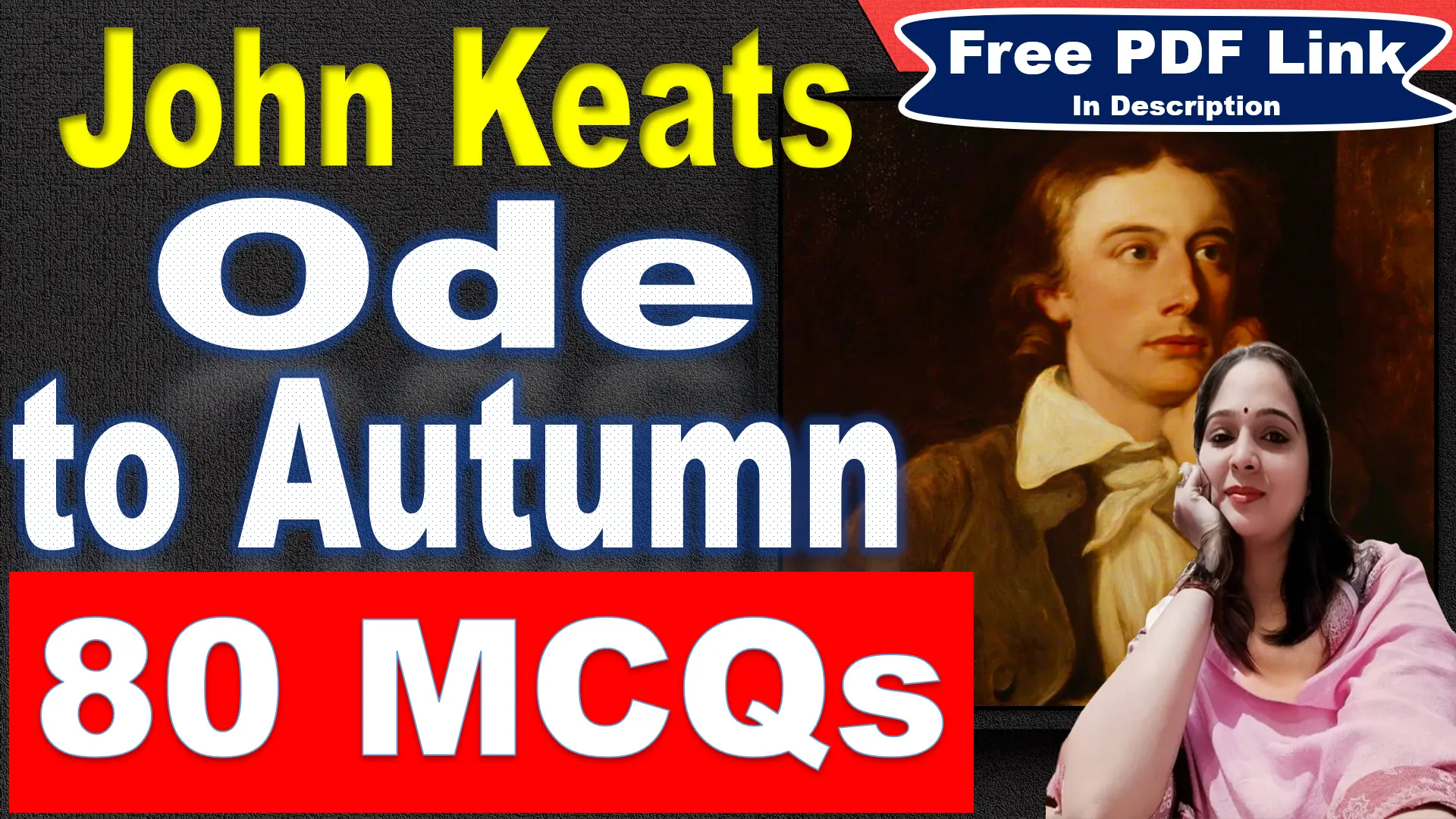Essay Type Questions
1. Write the critical appreciation of the poem “Sonnet 129” by William Shakespeare.
Introduction:
Shakespeare’s Sonnet 129, a sonnet of stark beauty and unflinching honesty, delves into the perilous depths of human desire, particularly lust. Through powerful imagery and masterful manipulation of form, the poem paints a vivid portrait of the destructive nature of uncontrolled passion, leaving the reader with a haunting reflection on the fragility of human nature.
Structure and Form:
Sonnet 129 adheres to the traditional Shakespearean sonnet form, consisting of three quatrains and a concluding couplet. This structure provides a natural progression for the speaker’s exploration of lust, from its initial allure to its inevitable descent into shame and regret. Each quatrain builds upon the previous, employing a consistent ABAB CDCD EFEF GG rhyme scheme. This tight weave of sound reinforces the poem’s thematic unity, creating a sense of entrapment within the cycle of desire.
Theme:
At the poem’s core lies a stark warning about the destructive power of unchecked desire. Shakespeare portrays lust not as a romantic ideal but as a consuming force that leads to emotional and spiritual depletion. The speaker emphasizes the fleeting nature of pleasure derived from lust, followed by a deep and lasting remorse that far outweighs any initial satisfaction. This central theme is woven throughout the poem, evident in imagery, language choices, and poetic devices.
Imagery:
The poem’s imagery is both visceral and unsettling, reflecting the speaker’s intense emotional turmoil. Lust is compared to a “waste of shame” and a “swallowed bait,” highlighting its detrimental consequences and its deceptive allure. Words like “bloody,” “cruel,” and “murderous” paint a picture of lust as a savage force, capable of inflicting immense pain on both the self and others. The contrast between the “bliss in proof” and the “very woe” further emphasizes the paradoxical nature of desire, where temporary joy leads to lasting suffering.
Poetic Devices:
Shakespeare masterfully employs a range of poetic devices to amplify the poem’s emotional impact and thematic resonance. Enjambment, the running-on of lines, creates a sense of urgency and breathlessness, mirroring the speaker’s impulsive pursuit of desire. Alliteration, the repetition of consonant sounds, adds a harshness to the language, reflecting the brutality of the emotions at play. Metaphors like the “swallowed bait” and the “heaven that leads men to this hell” offer powerful commentary on the deceptive nature of desire and its ultimate descent into self-destruction.
Conclusion:
Shakespeare’s Sonnet 129 is more than just a cautionary tale; it is a profound exploration of the human condition. Through its masterful use of form, imagery, and language, the poem lays bare the dark side of desire, exposing its power to consume and destroy. However, the poem does not offer a definitive solution or moral judgment. Instead, it leaves the reader with a haunting question: are we truly aware of the “hell” that lies hidden within the alluring “heaven” of desire?
2. Write long note on Poetic devices used in Poem “Sonnet 129” by William Shakespeare.
Shakespeare’s Sonnet 129 is more than just a collection of lines; it’s a tapestry woven with intricate and impactful poetic devices. Each word, meticulously chosen, and each stylistic nuance contribute to the poem’s visceral exploration of lust’s destructive power. Let’s embark on a journey through this sonnet, deciphering how these devices breathe life into its themes and emotions.
Metaphors:
Lust as a Wasteland: Right in the opening line, “Th’ expense of spirit in a waste of shame,” lust is compared to a barren wasteland, signifying its futility and emotional devastation. This powerful metaphor sets the stage for the poem’s bleak tone.
Lust as a Trap: Later, lust is likened to a “swallowed bait,” a trap laid to entrap the unsuspecting and lead them to self-destruction. This metaphor highlights the deceptive nature of desire, luring with fleeting pleasure while masking its inherent danger.
Heaven and Hell: In the final lines, the stark contrast between “heaven” and “hell” encapsulates the poem’s message. Lust promises a paradise of fulfillment, but ultimately delivers the inferno of shame and regret. This metaphor leaves a lasting impression of the potential dangers lurking beneath desire’s surface.
Personification:
Lust as a Predator: Attributing adjectives like “savage,” “bloody,” and “cruel” to lust personifies it as a monstrous entity capable of inflicting pain and destruction. This vivid imagery emphasizes the raw and dangerous nature of uncontrolled desire.
Imagery:
Harsh and Visceral: Words like “murderous,” “despised,” and “hated” paint a grim picture of the emotional fallout of lust. This visceral imagery evokes feelings of disgust and regret, amplifying the poem’s cautionary message.
Fleeting Bliss: Phrases like “a bliss in proof” and “before, a joy proposed” momentarily hint at the seductive allure of desire. However, their placement amidst a bleak landscape underscores the fleeting and deceptive nature of this pleasure.
Enjambment:
The continual run-on of lines throughout the poem mimics the relentless nature of desire. The reader is swept along in the speaker’s emotional torrent, unable to pause or escape the whirlwind of lust’s consequences.
Parallelism:
The repetitive sentence structures, especially in lines 5-6 and 9-12, create a sense of rhythm and urgency. This repetition reinforces the cyclical nature of desire, where fleeting pleasure is inevitably followed by devastating remorse.
Hyperbole:
Exaggerations like “extreme,” “mad,” and “all this the world well knows” amplify the poem’s message. These hyperboles emphasize the universality and overwhelming nature of lust’s destructive potential.
Alliteration:
The intentional repetition of certain consonant sounds, particularly harsh ones like “p” and “b,” adds a jarring effect to the poem. This sonic quality mirrors the turbulence and dissonance within the speaker’s soul, further highlighting the poem’s emotional core.
Antithesis:
The jarring contrast between “heaven” and “hell” in the final lines serves as a powerful antithesis. This stark opposition encapsulates the poem’s central message: the seductive potential of desire ultimately leads to self-destruction.
Paradox:
A paradox is a statement that appears to be self-contradictory or silly but may include a latent truth. In “Sonnet 129,” the paradox lies in the speaker’s description of lust as both desirable and despised, as in the lines “Enjoyed no sooner but despisèd straight,” and “A bliss in proof and proved, a very woe.”
Juxtaposition: Juxtaposition is a poetic device wherein the author places a person, concept, place, idea, or theme parallel to another. The purpose of juxtaposing two directly or indirectly related entities close together in literature is to highlight the contrast between the two and compare them. In sonnet 29, Placing “knows” and “none knows well” side-by-side highlights the gap between intellectual awareness and practical action. We may know something is bad, but resisting it proves challenging.





